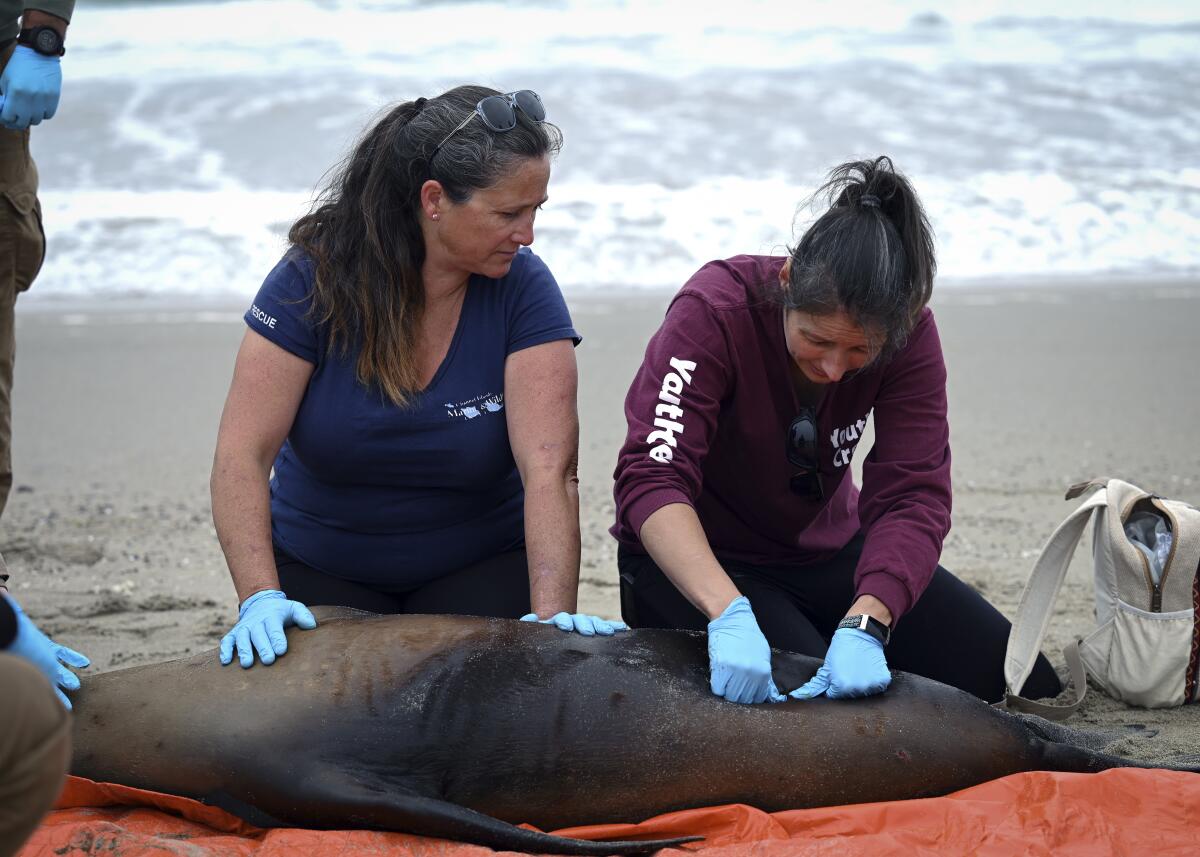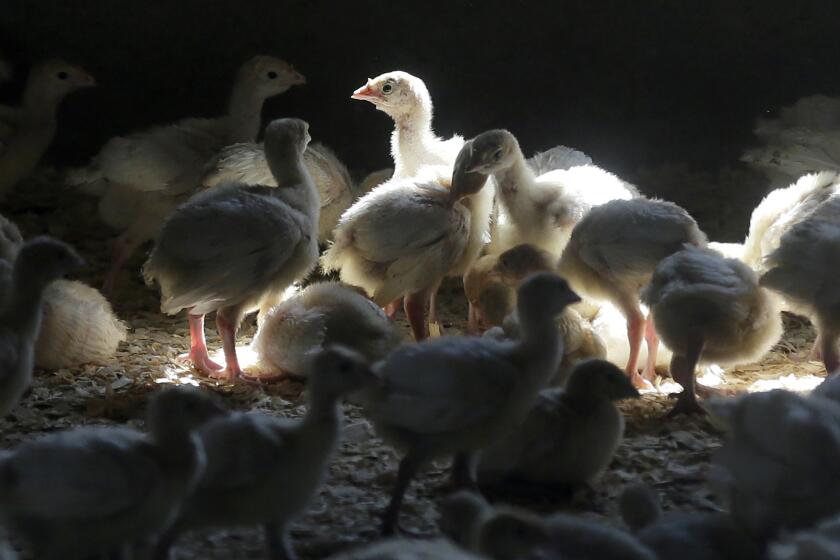Scores of reports of sick sea lions along California’s Central Coast

- Share via
Wildlife rescuers are reporting an uptick in diseased sea lions along California’s Central Coast.
The culprit: domoic acid, a neurotoxin produced by harmful algal blooms.
The toxin accumulates in filter-feeding fish such as sardines and anchovies, which are eaten in large quantities by sea lions, dolphins and fur seals.
Giancarlo Rulli, a spokesman for the Marine Mammal Center in Sausalito, said that since mid-July, the center’s network has seen an increase in the number of affected sea lions along the coast in Santa Barbara and San Luis Obispo counties. He said rescuers have responded to more than 70 sea lions, as well as two dolphins and two fur seals.
Rulli said roughly 25% of those sea lions eventually died — whether from the disease or “humane euthanasia.” The dolphins and fur seals also died.
By the time staff reached the two dolphins, he said, they were seizing on the beach.
“Once they’re out of water, you’re in a race against time,” he said of the larger mammals. While sea lions often spend time out of the water, if a dolphin remains on dry land for long, its own weight will crush its organs.
Rulli said it’s one of those tragic situations in which “euthanasia is often the primary and No. 1” response to relieve suffering, “especially when dolphins are showing seizures.”
Staff at the Channel Islands Marine & Wildlife Institute have also received numerous calls about sick animals.
Officials urged farmworkers, others to get the seasonal flu vaccine. An ‘exchange of genetic material’ between human and avian flu viruses is an unsettling scenario.
As of Friday, the institute was receiving roughly 100 reports a day of sick sea lions in Ventura and Santa Barbara counties. By Thursday, crews had saved 23 animals, said Samuel Dover, president of the wildlife rescue organization.
“A lot more died,” he said.
Domoic acid attacks the brain and the heart, causing seizures and heart failure. If left untreated, it usually causes permanent brain damage. The toxin naturally flushes from an animal’s system over time, but repeated exposure can result in longer-lasting and more serious effects.
Rulli said that an afflicted animal’s behavior can be “all over the board: lethargy, disorientation, classic head weaving ... your classic telltale signs that likely there’s an issue neurologically going on associated with the domoic acid poisoning.”
Dover, of the Channel Islands Institute, said this year’s algal bloom event is predominantly affecting adult female sea lions.
In similar events last year and in 2022, the poisoning didn’t seem to discriminate by sex or age.
“But it’s early,” said Dover, who noted that although there had been a few reports as far back as June, incidents of sick animals didn’t really pick up until late July.
He said the 2023 outbreak lasted 27 days, down from 37 in 2022.
Rulli said those outbreaks had occurred farther south.
Rescuing the animals can be difficult, considering their size, he said. An adult female sea lion can weigh up to 250 pounds, and an adult male up to 1,000. He said several people — from four to six — are needed to rescue one adult female, which means resources are tight.
If the animal can be triaged nearby and stabilized, Rulli said, rescuers try to transport them to the institute’s hospital in Sausalito.
Both Rulli and Dover cautioned people to give sick animals on the beach plenty of space.
The National Oceanic and Atmospheric Administration urges beachgoers to stay at least 50 yards, or about half a football field, away from seals and sea lions, whether the animals are sick or healthy, and to keep pets away.
Those who see marine animals they believe may be sick should call nearby wildlife rehabilitation experts such as those at the Sausalito Marine Mammal Center, (415) 289-7325, or at Channel Islands Marine & Wildlife Institute, (805) 567-1505.








